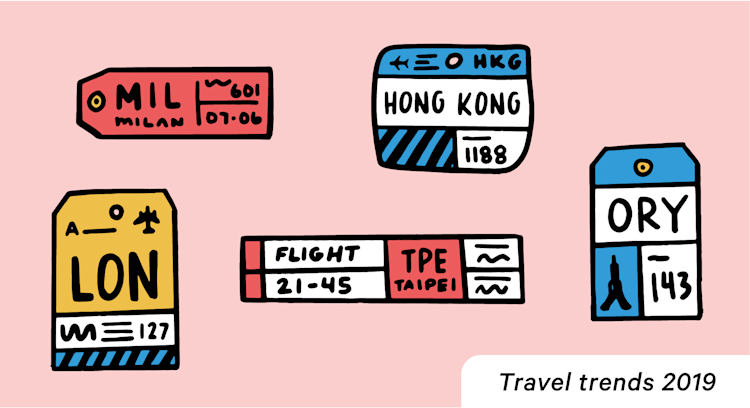Pivotal questions for today’s airline industry
This is the fourth in a series of posts about strategies, behaviors, and market realities that are shaping the travel industry’s future.

Each year, there are a few questions that emerge as possible game-changers for an industry, and the airline business is no different. Only time will produce the answers, but understanding the context around these questions and the consequences of each possible result will help airlines plan for their futures.
While 2018 saw sizable shifts in the sector, 2019 could be the year of massive change.
1. Will first-class demand continue?
First-class demand for transcontinental and intercontinental flights has been strong during the economic boom of the past few years. One first-class ticket can create as much revenue as a dozen coach seats.
First class is one of the only areas in the airline sector that has seen any significant or impressive innovation. Luxury beds and, in some cases, even small cabins with private showers have popped up among some airlines’ first-class amenities. It’s the most profitable product airlines have, so it makes sense they are investing in making the experience as attractive as possible to luxury flyers. But first class is dependent on high-income travelers with a lot of disposable income, and its future could be in jeopardy if their preferences change due to an economic downturn.
Question for 2019: If the economy starts to contract, will first-class demand hold? And if it doesn’t, how will airlines make up for the losses?
2. What’s next for low-cost carriers?
Low-cost carriers (LCCs) were the pioneers of unbundling. But full-service airlines took a page out of their playbook a few years ago. Big airlines added a new ticket category, basic economy, to the traditional economy, business, and first class. Delta started charging for checked bags on select trans-Atlantic flights in 2017. Alaska Airlines, the last airline to hold out, is also set to start a basic economy ticket this year. These tickets remove many standard privileges, like carry-ons and seat selection, allowing full-service airlines to compete with LCCs for budget-conscious travelers who purchase tickets largely based on price alone.
Question for 2019: As traditional airlines move into the low-cost carrier territory, how will low-cost carriers compete and distinguish themselves?
3. Is this the time for short-haul disruption?
When your end-to-end traveling time takes twice as long as the flight itself, you know short-haul air travel is broken. Airlines recommend arriving at the airport anywhere from 45 minutes to 2 hours before boarding time for any domestic flight. While TSA screening last year only took 6.48 minutes on average, it can take up to 40 minutes or longer to get through security. Add in drive time, made worse by traffic in urban areas, and suddenly a less-than-two-hour flight takes almost half a day in total travel time.
There are at least 2,500 airports that are not used by commercial airlines, and these small local airports could be the key to unlocking short-haul. Start-up airlines like Cora and Jetsuitex are pushing into these airports to cut down the non-airborne leg of the process. Cora brands itself as an air taxi, and Jetsuitex, an Affirm partner, only serves routes that crisscross California, Las Vegas, and now to Seattle. By skipping traditional airports, these carriers can give travelers a much more enjoyable and streamlined flight experience.
Question for 2019: In short-haul travel, will start-ups be able to gain market share and alter consumers’ reliance on commercial airlines?
The answers to these few key questions could shift the blueprint for airline travel over the next few decades. But next year will bring new questions and innovations in the industry. Attracting new customers and building enduring brands will depend on an airline’s ability to keep adapting.
Read the other articles in this series:




